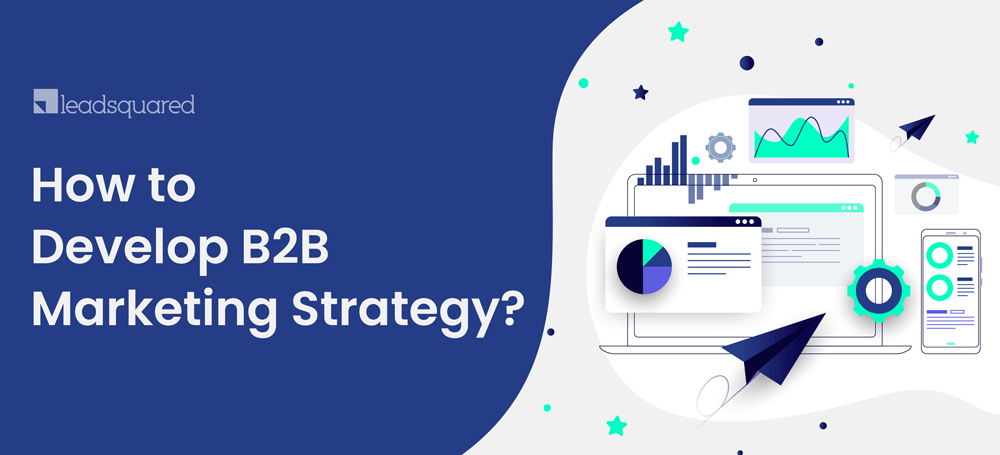
A B2B marketing strategy is created by keeping in mind the needs of the target customers.
A strategy must take into account the positioning, unique values, and resources like technical and financial budget.
And it needs to flow from the current situation to the future positioning of the business.
But, listing out a bunch of scattered tactics or a generic, one-size-fits-all strategy, will land you in the middle of the Sahara desert. High and Dry!
Clarifying and defining steps according to the business needs is the key.
Marketers often use strategy and tactics simultaneously, which is a wrong practice and needs to be corrected right now.
There is a fundamental difference between tactics and a strategy.
But before getting into it, here’s a summary of how you can develop a B2B marketing strategy that will cater to your needs –
- Trace your current position in the market.
- Chalk out your target customers.
- Set goals.
- Outline your marketing tactics & how to implement them
What’s The Difference – B2B Marketing Strategy & B2B Marketing Tactics
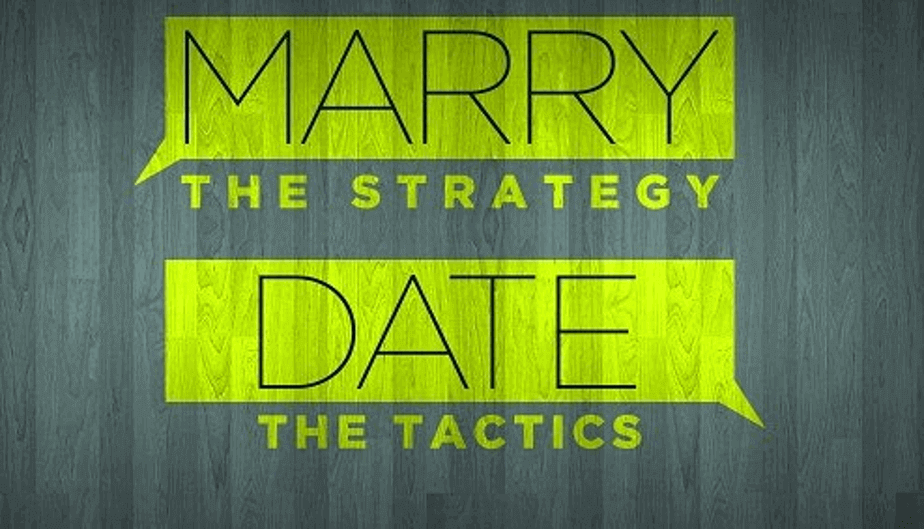
There’s a lot of confusion in the marketing world between “tactics” and “strategies.”
Even seasoned marketers talk about or search for strategies when they’re looking for tactics—and vice versa.
If you are also “one of those guys,” then here’s a simple way to think about it:
A strategy is a plan. PERIOD
A tactic will turn your strategy into action to attain the ultimate objective.
A marketing strategy lays out, the goals for marketing, how you’ll measure success, who you’ll target, where, and how you’ll target them.
For example, a baseline B2B marketing strategy might say:
The goal is to grow signups to one million over the next 12 months.
For that, they will need tech-savvy salespeople, who are informed about the latest trends, somewhere between the ages of 20-40.
To target these people across the web, email marketing campaigns, social media advertising, and paid search engine ads would be required.
In this example, the B2B marketing strategy calls for three different marketing tactics:
- Email marketing
- Social media advertising
- Paid search ads
This diagram will help you understand the example better.
Thus, the strategy here is Marketing, and the different ways used here to leverage from this marketing are the tactics.
A marketing strategy will then go into answering the underlying question, i.e., how you’ll use these three tactics—creating an email marketing strategy, a social media strategy, and a search strategy.
Why are Tactics Useless without Strategy?
The B2B marketing strategy outlines the goals and the success metrics i.e., the limits for both overall and individual tactics used.
So if you don’t have this guide to succeeding, then what will drive your social media activity? Or your email campaigns?
Without a strategy in place, it’s impossible to track marketing campaigns and efforts that work together toward a common goal.
It will also be challenging to figure out whether your efforts are successful at driving results for the business.
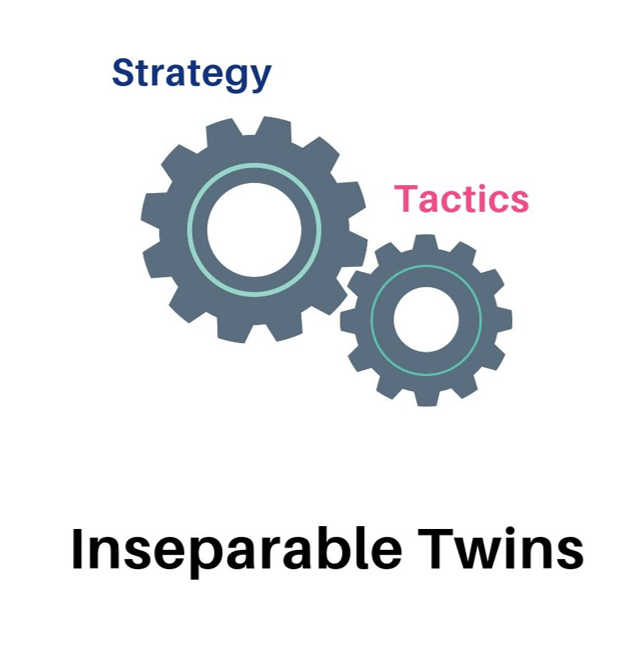
In a nutshell, scattered marketing tactics without a strategy tying them together will not help in your B2B Marketing Goals.
Instead, building your marketing tactics to work with each other towards a common goal, will help in mapping efforts to the buyer’s journey.
It will be easy to visualize and optimize how every single asset and every single campaign works to move leads through the sales funnel.
How to Build a B2B Marketing Strategy?
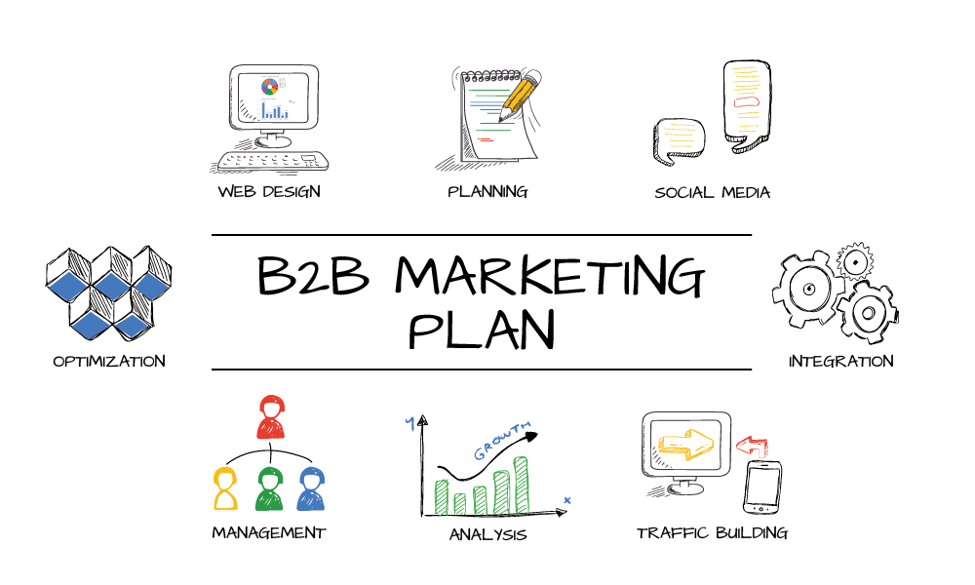
So, now that we’re on the same page about why a list of tactics isn’t a strategy—and why you need to actually develop a marketing strategy—let’s talk about how to do that.
Instead, writing down most of the information that you already have and use daily for marketing efforts – every day, here are five quick steps to building out your B2B marketing strategy.
STEP. I – Trace your current position in the market
To set goals and objectives, you should know about the external environment; your business is operating in. This will help to decide how you’ll achieve them.
That includes:
- Competitors: A complete SWOT analysis of your competition will help you to leverage from their shortcomings.
- The unique identity that will separate you from the others.
- And third, where that uniqueness does lands you in the market, among the competitors.

This competitive analysis will help you identify a particular gap or opportunity in the market (price, for example) that only your business solves.
That’s your unique selling proposition (USP).
STEP. II – Identify Your Target Customers
The next step is to look into who of your market, i.e., your target audience.

The tactics you choose will find answers to:
- The demographic information about your target customers – like Age, Gender, Religion, living standards, etc.
- Their Social footprint, i.e., the type of posts you share on Facebook, LinkedIn, the kind of products you search for while online, and the likes.
- Their problems and how your service will help them.
A marketing strategy needs to have an in-depth profile of the people you are trying to sell to—otherwise, you will not know who you are selling the service.
STEP. III – Set Goals
After putting together every foundational information in the first two steps, it’s time for Goal Setting.
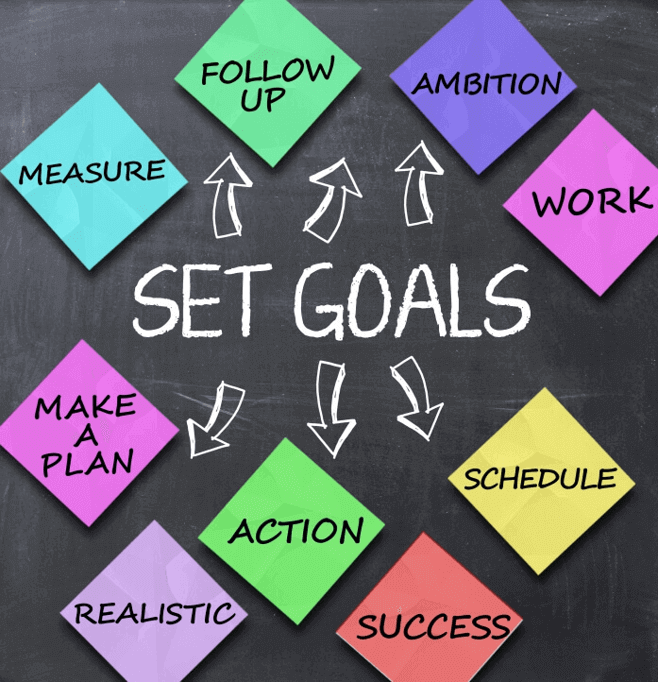
Marketing goals should be:
- Made in collaboration with the sales team, since they are the ones who are going to execute your tactics, first hand.
- Laid out with a specific timeline to follow like goals for the next month, quarter, year, etc.
- Easy to measure and control, i.e., the planned output should match the actual production.
- High-level— i.e., Detailed information on each tactic used and how to leverage it.
STEP. IV – Outline Your Marketing Tactics & How to Implement Them

The tactics your team will use to fulfill the goals from step three shouldn’t be pulled out of a hat.
Your goals should align with the tactics. They should be an evolving mix that gets tested and tweaked and optimized.
Rigid goals and tactics with confusing strategy outline will make you running in circles, i.e.; Back to zero.
For example, if one of your goals is to increase brand awareness among Gen Z, you probably don’t need to advertise it in print newspapers.
Thus, each tactic you use should have its own, and more specific implementation strategy outlined.
Here are a few B2B marketing strategies that you can use it for your benefit in 2020.
Before it ends…
A note on implementing and measuring B2B Marketing Strategy
Regardless of what marketing strategy you use, at some point in B2B marketing, you’ll start to see inbound traffic to your website.
But to measure the potential of your marketing strategy, you need to know who these companies are and if they are the best-fit?
LeadSquared enables B2B marketers to tie the loose ends of their tactics together.







